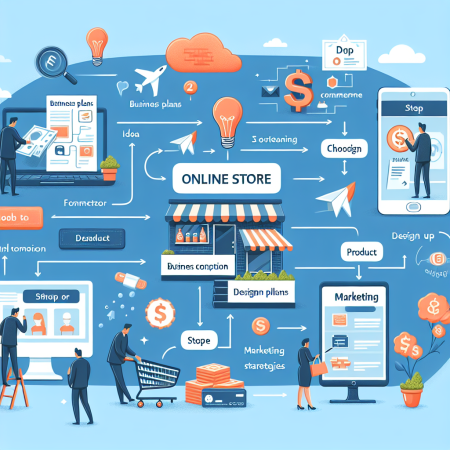How to Create an Online Store to Market Your Business
Choosing the Right E-commerce Platform
One of the initial steps in creating an online store is selecting the right e-commerce platform to host your website. Consider factors such as ease of use, customization options, pricing, and scalability. Popular e-commerce platforms like Shopify, WooCommerce, Magento, and BigCommerce offer various features to help you set up and manage your online store efficiently.
It’s essential to assess your specific business needs before choosing a platform. For instance, if you plan to sell a wide range of products, you may need a platform with robust inventory management capabilities. Look for platforms that provide secure payment gateways, mobile responsiveness, and SEO features to enhance your online store’s visibility.
Designing a User-Friendly Website
The design of your online store plays a crucial role in attracting and retaining customers. Opt for a clean and visually appealing layout that showcases your products effectively. Use high-quality images and engaging product descriptions to entice visitors to make a purchase. Ensure that your website is easy to navigate, with clear categories and intuitive menus.
Consider the importance of mobile responsiveness in today’s world where many consumers shop on their smartphones and tablets. A responsive website design ensures that your online store looks and functions seamlessly across all devices, providing a positive user experience regardless of the screen size.
Adding Products and Setting Prices
Once your online store is set up, it’s time to start adding products to your catalog. Create detailed product listings that include images, descriptions, prices, and any relevant options such as sizes or colors. Categorize your products logically to help customers find what they are looking for quickly.
When setting prices for your products, consider factors such as manufacturing costs, competitor prices, and desired profit margins. Offer discounts or promotions to attract customers and encourage repeat purchases. Keep track of your inventory levels to avoid overselling and maintain a positive customer experience.
Setting Up Secure Payment Gateways
Security is a top priority for online shoppers, so it’s crucial to set up secure payment gateways for your online store. Choose reputable payment processors that offer encryption and fraud protection to safeguard your customers’ financial information. Popular payment options include credit/debit cards, PayPal, Apple Pay, and Google Pay.
Ensure that your online store complies with industry standards such as PCI DSS to protect sensitive data. Display trust badges and security seals prominently on your website to assure customers of a secure shopping environment. Implement SSL certificates to encrypt data transmitted between your website and customers’ browsers for enhanced security.
Implementing Marketing Strategies
Once your online store is live, focus on implementing marketing strategies to drive traffic and increase sales. Utilize social media platforms, email marketing, content marketing, and search engine optimization (SEO) to reach a broader audience. Develop a marketing plan that includes promotional campaigns, discounts, and collaborations with influencers or other businesses.
Monitor key performance indicators (KPIs) such as website traffic, conversion rates, and customer acquisition costs to evaluate the effectiveness of your marketing efforts. Continuously analyze customer behavior and feedback to refine your strategies and improve the overall shopping experience on your online store.
Related Content
- Boost recurring visitors with exclusive gated content that drives traffic in 2025
- How to Stay Engaged and Motivated in a Remote Job
- How To Optimize Your Coaching Website for Search Engines and Users
- 7 Tips for Building Trust With Your Affiliate Marketing Audience
- How To Use Behavioral Targeting to Refine Your Ad Campaigns

